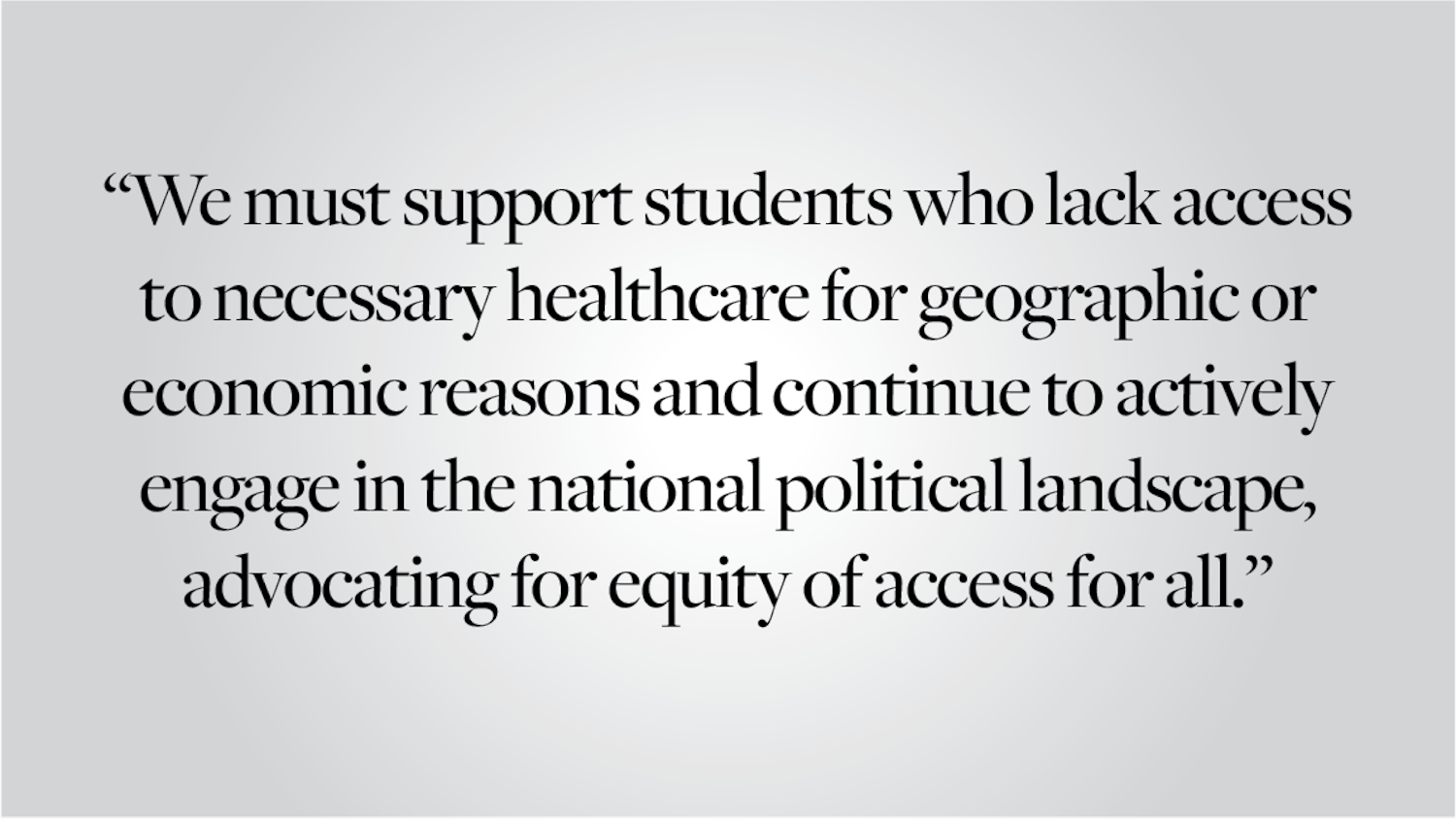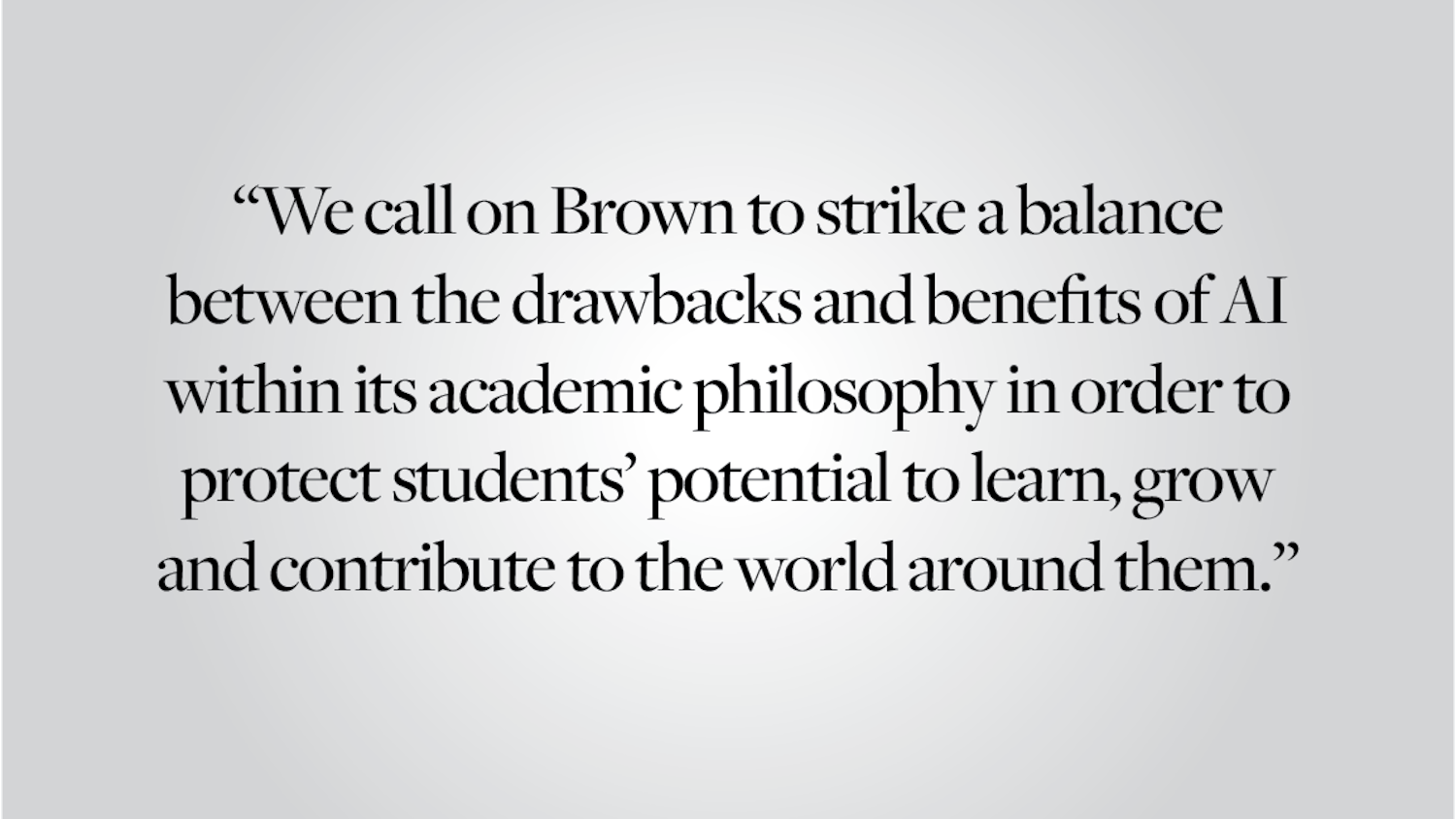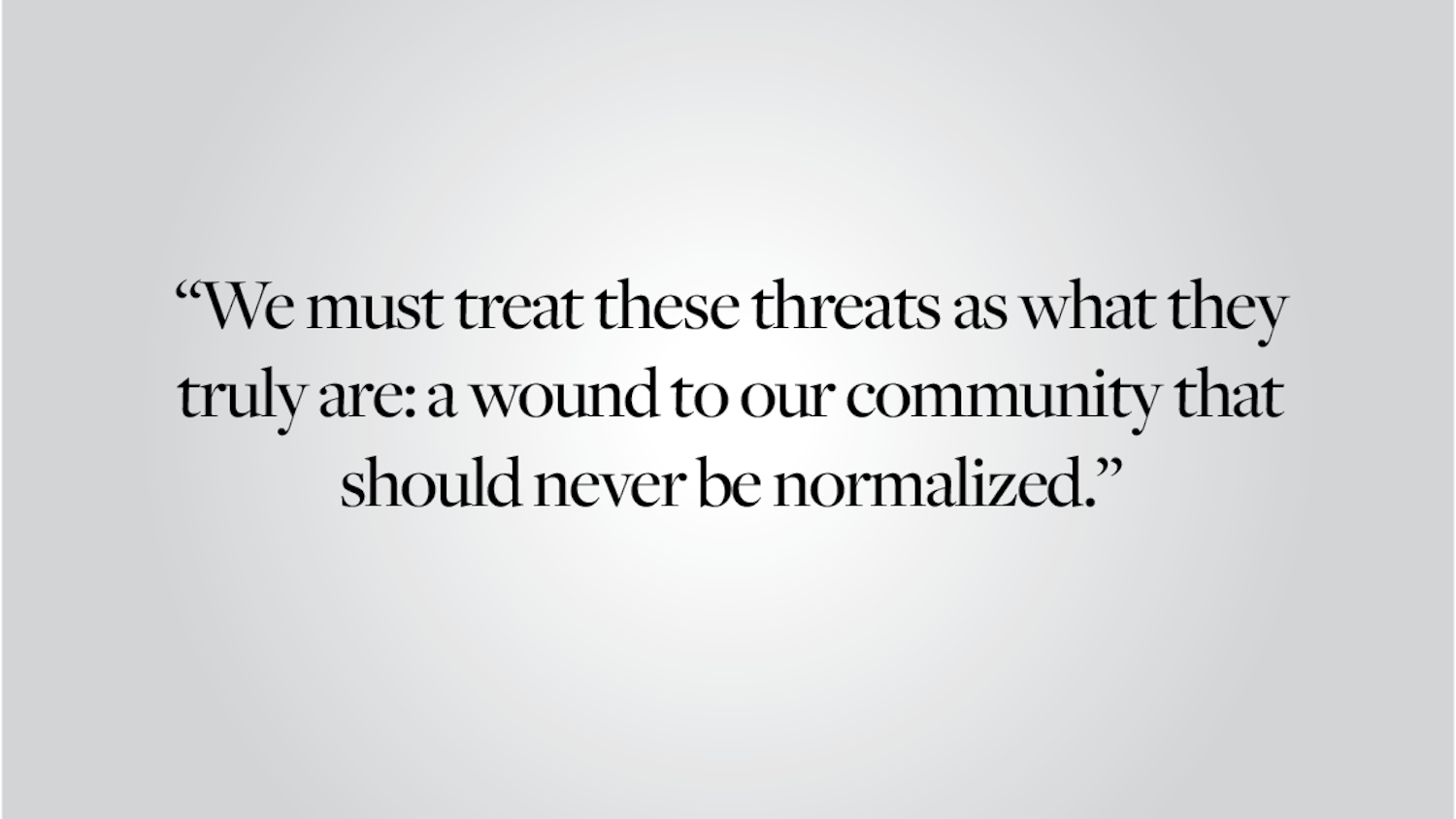Anyone who walks by the Main Green this week during the day is likely to be confronted by a slew of blown-up photographs depicting the graphic details of violence done to animals. These images are juxtaposed with shots of similar types of harm being done to people in the context of famous historical injustices like the American slave trade. Having to walk by such pictures certainly doesn't make for a fun trip home from class. But does it serve a purpose?
We think it's still too soon to tell. But early reports from the exhibit's first day suggest that the Brown Animal Rights Club and their partners from People for the Ethical Treatment of Animals are doing a surprisingly good job pulling off an exhibit that borders on tastelessness.
The dangers of photo displays like this are well-known. PETA's 2003 display "Holocaust on Your Plate," which placed pictures taken in death camps next to those from factory farms, provoked a furious reaction from Jewish groups and Holocaust survivors. A similar poster put up in Berlin, emblazoned with the caption "To Animals, All People are Nazis," was ruled "an offense against human dignity" by a German court in March.
At first glance, the Main Green display appears to have similar problems. It's only natural to think that side-by-side pictures of a cow and a slave being branded equate the two practices. Many people would with good reason be repulsed, or at least turned against PETA's cause, if they believed the display was making the point that the worst atrocities in human history are morally indistinguishable from killing a cow to make a beef Carberry.
On the other hand, BARC and PETA rightly note that the conditions animals in factory farms or in many laboratories are kept in is appalling. You don't have to think animals are anything close to our moral equals to believe we ought to reform these practices. Animal rights groups perform a valuable service by highlighting the worst abuses.
The BARC/PETA display toes the line between making a counterproductive equation and providing valuable information. Fortunately, the staff at the display were willing to acknowledge this tension, and address concerned passers-by accordingly.
BARC and PETA members went to great pains to explain that their intent was raising questions about our use of animals rather than establishing moral equivalence. The polite and intellectual manner in which they addressed even hard questions demonstrated that the exhibit, rather than being an exercise in sloppy moralizing, was intended as a serious reflection on animals in modern society, a point underscored by the arguments made on the billboards accompanying the photographs.
So, Brown students, keep an open mind. The display may be shocking, but the care its creators put into it turns what could be offensive into something potentially of great value. A short stop at the conversation booth might be well worth your time.
Editorials are written by The Herald's editorial page board. Send comments to editorials@browndailyherald.com.




